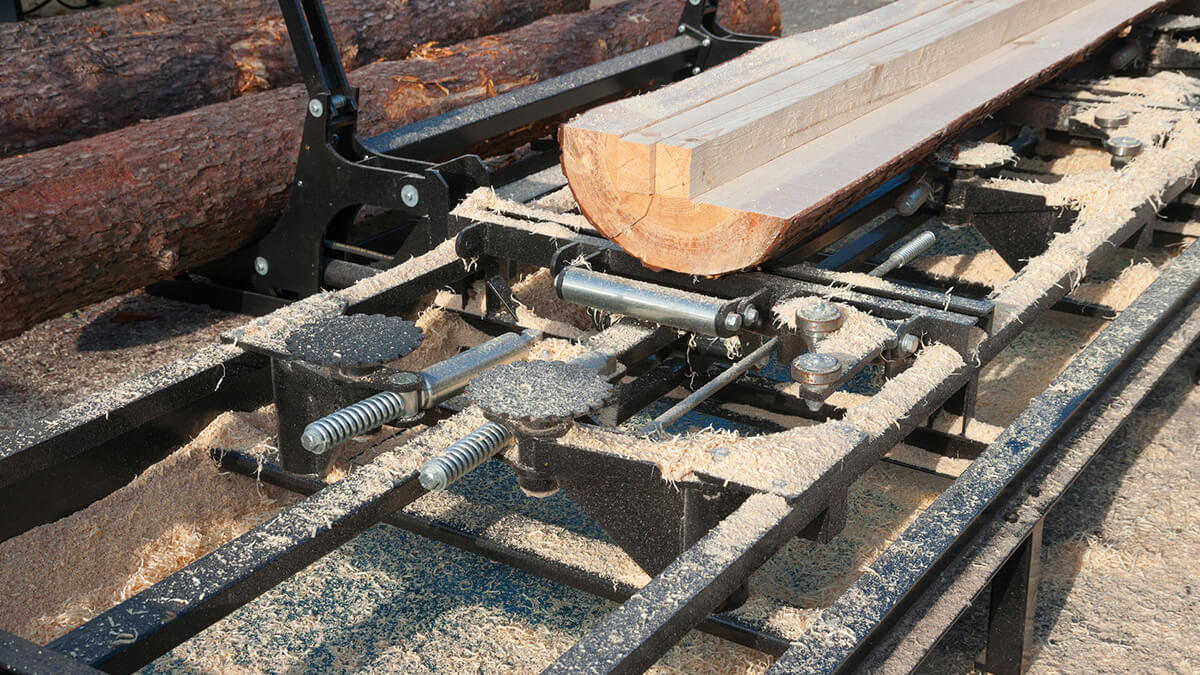Industrial saws play a pivotal role in processing a wide range of materials with precision and efficiency. Taiwan is a major supplier of industrial saws to the automotive, aerospace, and construction, as well as the metal fabrication industries. This article aims to provide a comprehensive understanding of the diverse industry of industrial saws, exploring their types, structures, applications, and the crucial role they play in various industries.
Introduction to Industrial Saws
In industrial manufacturing, three primary categories of saws are widely used: band saws, circular saws, and reciprocating saws.
Band Saws
Band saws use a continuous, flexible metal band with teeth that cuts through materials as it rotates on two pulleys. These saws are versatile and commonly used for cutting wood, metal, and other materials in straight or curved patterns. Their flexibility makes them suitable for intricate designs and curves, making them a staple in woodworking and metalworking industries.
Circular Saws
Circular saws, as the name suggests, have a circular blade that spins rapidly to cut through materials. These saws are commonly used for straight cuts in various materials, including wood, metal, and plastic. Circular saws come in different designs, such as handheld models for construction sites and stationary models for industrial settings, offering adaptability for different applications.
Reciprocating Saws
Reciprocating saws have a blade that moves back and forth, ideal for tasks requiring precision and control. They are commonly used in construction and demolition work, cutting through a variety of materials like wood, metal, and plastic. Their versatility makes them valuable in construction, plumbing, and electrical work.
Role of Industrial Saws in Manufacturing
Each type of industrial saw comes with its unique set of features and advantages. Band saws offer precision and versatility, circular saws excel in straight cuts and speed, while reciprocating saws provide flexibility in tight spaces. Understanding these differences is crucial for selecting the right tool for a specific manufacturing task.
Band Saws
Band saws are available in horizontal and vertical configurations, each serving specific purposes. They are often employed in metal fabrication and woodworking. Horizontal band saws are commonly used for straight cuts, while vertical band saws excel at cutting intricate patterns, curves, and irregular shapes in wood.
Circular Saws
Circular saws come in different varieties, including handheld, table-mounted, and miter saws. Modern circular saws often come with features like laser guides for enhanced accuracy.
Handheld circular saws have a handle used to grip and control the saw during operation. The trigger switch is located on the handle and is used to turn the saw on and off. Handheld circular saws typically have a depth adjustment that allows the user to control how deep the blade cuts into the material.
Table-mounted circular saws are securely mounted on a table or workbench, designed for stability and precision. They are commonly utilized in workshops and manufacturing facilities.
Miter saws, also known as chop saws, have a pivoting arm that allows the blade to tilt while feeding it into the workpiece, enabling users to make mitered or angled cuts accurately. They are popular in tasks such as framing, molding, and trim work where achieving precise angles is crucial.
Reciprocating Saws
Reciprocating saws, also known as sabre saws, have a blade that moves back and forth in a push-and-pull motion. This design allows for efficient cutting in confined spaces and challenging angles. Reciprocating saws are commonly employed by plumbers, electricians, and demolition experts in construction for tasks such as cutting through walls, pipes, and other materials.
Conclusion
Industrial saws are designed to streamline processes, ensuring that each piece produced meets exact specifications, minimizes waste, and reduces the time and effort required for cutting and shaping materials. Investing in the right industrial saw translates to long-term cost-effectiveness, reduced material waste, increased efficiency, and the versatility to handle various tasks.














